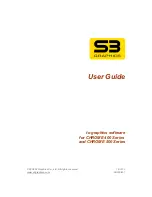
41
companies, can negotiate sharing agreements with license holders.
1.3. 4.9 GHz PSB Frequency Band Plan
The 4.9 GHz band ranges from 4940.5-4989.5 MHz and can be segregated out
using 1, 5, 10, 15, and 20 MHz of bandwidth.
1.4. 4.9 GHz PSB Licensing Requirements
A 4.9 GHz band license gives the licensee authority to operate on any
authorized channel in this band within the applicant's legal jurisdiction such as city,
county, or state. The 4.9 GHz band is shared by all licensees, who must coordinate
their usage of the band with other licensees within their areas of authority. The 4.9
GHz licenses are granted for a 10-year term.
The license gives authority to construct and operate:
¾
Any number of base stations anywhere within the area authorized by the license
¾
Base and mobile units, including portable and handheld units
A 4940-4990 MHz band license does not give the licensee authority to
operate permanent fixed point-to-point stations. Licensees choosing to operate
such fixed stations must license them individually on a site-by-site
basis. Such
fixed operation will be authorized only on a secondary, non-interference basis to
base, mobile and temporary fixed operations.
1.5. 4.9 GHz PSB Peak Power Limits
The transmitting power of radios operating in the 4940-4990 MHz band must
not exceed the following maximum limits:
Channel Bandwidth in MHz
Class A peak output power in dBm
Class B peak output power in dBm
1
20
7
5
27
14
10
30
17
15
31 8
18 8
20
33
20
1.6. 4.9 GHz PSB Emission Mask
The FCC has adopted two emission masks for use in the 4.9 GHz band. The
first being DSRC-A, is a mask strictly for low-power applications. The second being





































